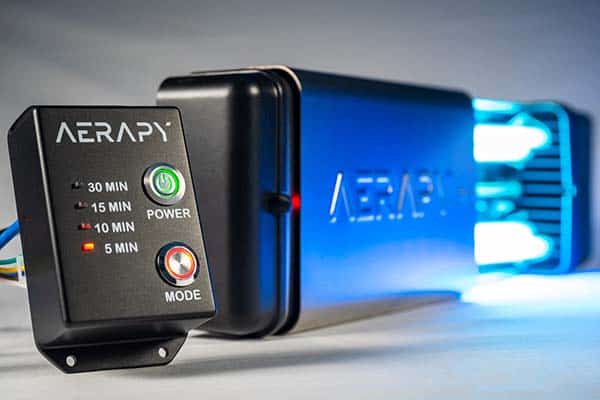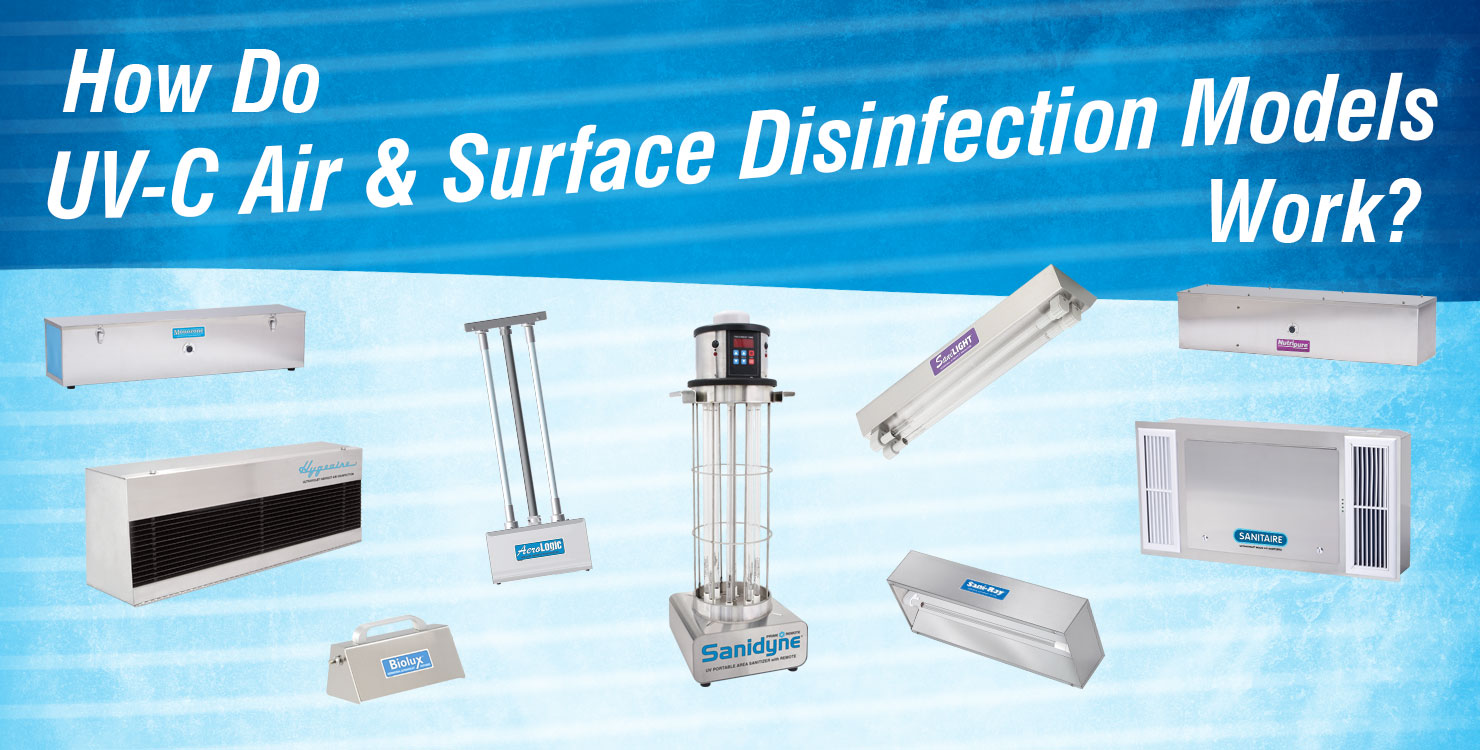Discovering the Advantages of Far UVC Light: Revolutionizing Indoor Air High Quality
One such service that has gotten attention is Far UVC light. How exactly does Far UVC light work? In this discussion, we will check out the interesting globe of Much UVC light and reveal its capacity in changing the means we safeguard our indoor environments.
Exactly How Much UVC Light Functions
Far UVC easy work by producing short-wavelength ultraviolet light that has the ability to penetrate and inactivate microbes. Unlike conventional UV light, which can be hazardous to human skin and eyes, much UVC light has a much shorter wavelength that is soaked up by the outer layers of human skin, preventing it from reaching the underlying living cells. This makes it a efficient and risk-free option for continuous sanitation in occupied spaces.
When much UVC light is discharged, it communicates with the DNA and RNA of microorganisms, consisting of microorganisms and infections, disrupting their capability to reproduce and triggering them to become non-active. The high energy of the short-wavelength light damages the molecular framework of the genetic product, stopping the microorganisms from duplicating and spreading out.

Additionally, much UVC light can be easily integrated right into existing lights fixtures, making it an economical solution for a large range of applications, including health care facilities, institutions, workplaces, and public transport. Its ability to continuously sanitize busy rooms without posing a risk to human health and wellness makes much UVC light an encouraging modern technology in the field of indoor air high quality administration.
Much UVC Light's Influence on Airborne Pathogens
The influence of much UVC light on air-borne pathogens is significant in decreasing the transmission of contagious illness and enhancing interior air high quality. Much UVC light describes a specific series of ultraviolet light that has a wavelength between 207 and 222 nanometers. Unlike conventional UVC light, which is damaging to human skin and eyes, far UVC light has actually been found to be safe for humans while still being effective versus virus.
Researches have actually revealed that far UVC light has the capability to inactivate a wide range of air-borne infections, consisting of the influenza virus and the coronavirus (far-uvc). These pathogens are transmitted through respiratory system beads, and by utilizing much UVC light, it is possible to reduce their viability and prevent their spread
Among the vital benefits of utilizing far UVC light is its capacity to get to all locations of a space. Unlike other disinfection methods that might have limited reach, far UVC light can be mounted in overhanging illumination fixtures, guaranteeing that the entire room is dealt with. This makes it specifically reliable in congested areas such as hospitals, schools, and mass transit.
In addition, far UVC light can be utilized constantly without presenting a danger to human health. It can be implemented as component of a detailed technique to improve interior air top quality by decreasing the concentration of air-borne virus. By including far UVC light into existing air flow systems, it is feasible to create more secure and healthier interior atmospheres.
Health Conveniences of Far UVC Light
Using far UVC light provides many health benefits, making it a useful tool in advertising public health and safety and security. Much UVC light has been found to successfully eliminate airborne pathogens, such as germs and infections, without harming human skin or eyes. This makes it an optimal service for disinfecting indoor environments and minimizing the threat of infections.
One of the crucial wellness benefits of far UVC light is its capability to battle the spread of airborne illness. Research studies have actually revealed that far UVC light can efficiently suspend infections like flu and consumption. By installing far UVC lights in public areas, such as workplaces, hospitals, and schools, the transmission of these illness can be substantially decreased.
Furthermore, far UVC light has been found to be secure for continual direct exposure, as it does not create skin damages or boost the danger of skin cancer. This is because of the fact that far UVC light has a restricted range of penetration in human skin, avoiding any harm to much deeper layers.
Along with its direct effect on airborne microorganisms, far UVC light can likewise have indirect health and wellness benefits. By decreasing the presence of hazardous microorganisms in the air, it can boost interior air high quality, resulting in a reduction in respiratory symptoms and allergic reactions.
Much UVC Light's Function in Reducing Irritants

Far UVC light, with its wavelength in the variety of 207 to 222 nanometers, has actually been proven to be reliable in inactivating microorganisms, viruses, and fungi. Current research studies have also revealed that it can successfully lower the presence click for source of irritants in indoor rooms. When far UVC light is discharged, it communicates with the DNA and RNA of bacteria, damaging their hereditary product and stopping their replication.
Much UVC Light's Potential in Public Spaces
With its tested performance in reducing allergens and suspending microorganisms, far UVC light holds wonderful potential for application in public areas. Public rooms, such as hospitals, airports, institutions, and offices, are frequently crowded and susceptible to the spread of airborne illness. Incorporating much UVC light modern technology in these locations can significantly enhance indoor air high quality and minimize the transmission of unsafe virus.
One promising application of much UVC light in public spaces is in air flow systems - far-uvc. By mounting far UVC lamps in heating and cooling systems, the modern technology Get More Info can decontaminate the air as it flows, effectively reducing the concentration of air-borne infections and microorganisms. This strategy can aid prevent the spread of diseases such as influenza, covid-19, and consumption, promoting a much healthier and more secure atmosphere for passengers
Additionally, far UVC light can be employed in the sanitation of often touched surfaces. High-touch areas in public rooms, such as doorknobs, hand rails, and elevator switches, can nurture a wide range of pathogens. By purposefully positioning far UVC lights in these locations, the innovation can continuously decontaminate surface areas, decreasing the threat of contamination and transmission.
In addition, using far UVC light in public areas is risk-free for human direct exposure. Unlike standard UVC light, which can be hazardous to human skin and eyes, far UVC light has actually been verified get redirected here to be safe and non-toxic for constant operation in busy areas. This makes it an excellent solution for enhancing indoor air high quality without presenting any kind of wellness threats to individuals.
Conclusion

Far UVC light functions by discharging short-wavelength ultraviolet light that has the ability to pass through and inactivate microbes. Unlike standard UV light, which can be hazardous to human skin and eyes, much UVC light has a shorter wavelength that is soaked up by the outer layers of human skin, stopping it from reaching the underlying living cells. Much UVC light refers to a specific variety of ultraviolet light that has a wavelength between 207 and 222 nanometers. Unlike traditional UVC light, which is harmful to human skin and eyes, much UVC light has actually been discovered to be secure for humans while still being reliable against virus.
Unlike conventional UVC light, which can be harmful to human skin and eyes, much UVC light has actually been shown to be non-toxic and risk-free for continual procedure in occupied areas.